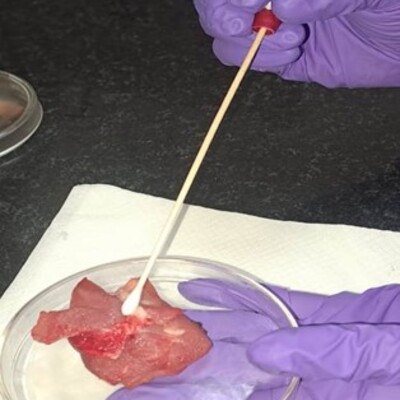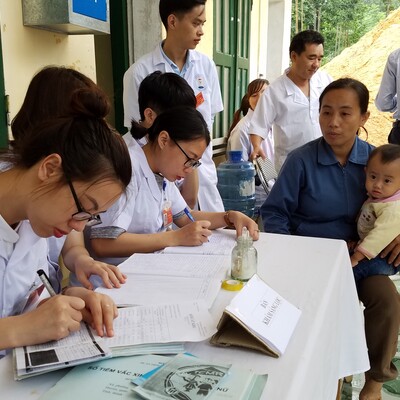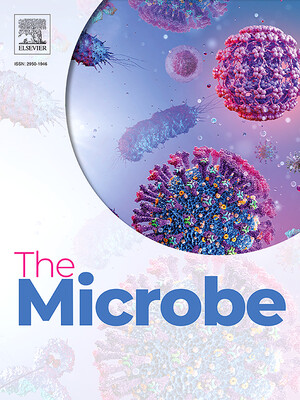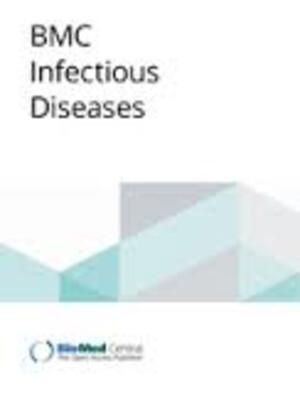
Decades of foundational animal health research showcased in new book
3 Nov 2021
ILRI launches a book
detailing the impacts of livestock research
for development conducted by ILRI and
its many partners since the early 1970s.
Check out the book's
landing page.
Below is just one of the many stories outlined in the book.
Decades of foundational animal health research in the fields of livestock immunology, parasitology and genetics conducted by the International Livestock Research Institute (ILRI) and its predecessor, the International Laboratory for Research on Animal Diseases (ILRAD), in Kenya generated many firsts. These include the first protozoan parasite (a trypanosome) to be cultured in the laboratory; determination of the genetics underlying the trypanosome's ability to continuously change its protein coat, thereby making the parasite impregnable to a conventional vaccine; delineation of the cellular (T-cell-mediated) and humoral (antibody-mediated) responses of the bovine immune system to infection with pathogens (from protozoa to viruses to bacteria); evidence and conservation of a previously neglected wealth of genetically controlled disease-resistance traits in the indigenous livestock breeds of developing countries, including resistance to trypanosomiasis (sleeping sickness) in West Africa's ancient, humpless N'Dama cattle and resistance to intestinal worms in the 'hairless' red Maasai sheep of East Africa.
A standout among this groundbreaking animal health work by ILRAD/ILRI has been its decades-long work to help refine a 'live' vaccine first developed by scientists back in the 1970s with Kenya’s premiere veterinary institution, the East African Veterinary Research Organisation (of the former East African Community), which is now part of the Kenya Agricultural and Livestock Research Organization, to protect cattle from East Coast fever. This cancer-like tick-transmitted disease, unknown until its discovery in 1903 in southern Africa by Swiss veterinary researcher Arnold Theiler, kills cattle within three weeks of infection through the build-up of excess fluid in their lungs, which literally drowns them.
Theileria parva the remarkable single-celled parasite that causes East Coast fever, has genes that enable it, within minutes of being injected into an animal by an infected tick, to attach itself to the surface of a cow’s white blood cell, ‘unzip’ the cell membrane and slip into the cell. Once inside the bovine cell, the parasite is unseen and safe from attack by the cow’s antibodies.T. parva then proceeds to take over the cell machinery. Activating the cow’s cell division pathway, it multiplies along with its host cell, causing the cancer-like state.
East Coast fever causes annual losses estimated at more than USD300 million and more than one million cattle deaths in a dozen countries of eastern, central and southern Africa, where a cow dies every 30 seconds from this disease. Up to 28 million cattle, or close to 20% of the total cattle population in the affected region, are considered at risk. Most of the animals threatened by the disease belong to poor pastoralist herders and smallholder farmers for whom the loss of even one cow can be disastrous.
The ‘live’ vaccine developed against East Coast fever uses an 'infection-and-treatment' method of immunization (ITM), in which a specific cocktail of different live but attenuated strains of Theileria parva is inoculated into an animal along with a long-acting antibiotic. By priming the animal’s immune system against subsequent attack by these T. parva strains, a single vaccination provides the animal with life-long immunity against this deadly disease.
Although available much earlier, the ITM was not deployed on a large scale until the late 1990s, in northern Tanzania, when more than 250 million pastoralist zebu calves were vaccinated over a ten-year period (from 1998 to 2008). Calf mortality reductions of up to 95% were reported and livestock owners were reported to receive up to 50% more from the sale of vaccinated animals.
The sequencing of the genome of T. parva parasite, completed by ILRI and The Institute for Genomic Research in 2005, and its publication in the scientific literature enabled scientists to thoroughly characterize the protozoan’s genetic makeup, including the diversity of the parasite’s antigenic molecules that provoke the cow’s immune system to generate protective antibodies and killer T cells that attack and clear the parasite from the host.
This ITM vaccine, dubbed ‘the Muguga cocktail’, provides broad-spectrum immunity to East Coast fever and is now a registered product in three countries in eastern Africa. Expensive, time consuming and difficult to produce on a large scale, the first commercial batches of the ITM vaccine were released by ILRI in 1996 and 2008. Effort today is being directed at improving and scaling up the production of this ‘live vaccine’ to make it more widely and cheaply available to the millions of people whose livelihoods depend on livestock in the twelve countries of eastern, central and southern Africa where the disease remains endemic.
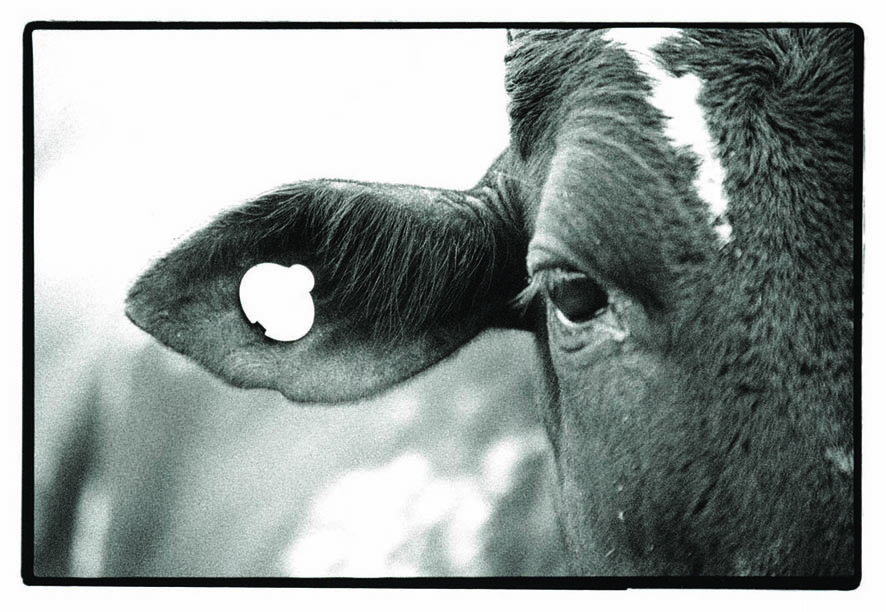
Each animal vaccinated against East Coast fever is given an ear tag (photo credit: ILRI/Stevie Mann).
Use of ITM allows smallholders to keep improved dairy animals in East-Coast-fever-endemic areas. It reduces cattle deaths by 95% (East Coast fever is responsible for about two-thirds of calf mortality in Tanzania and is most serious in improved breeds of cattle, which are the focus of dairy development in poor countries). This immunization also reduces the need to apply toxic chemical acaricides on cattle by at least 50% while improving profits for small-scale dairy farmers and herders, who are then encouraged to invest in livestock as a business.
This is an exciting time in the field of vaccine development, particularly due to new tools that allow researchers to monitor responses to both infection and immunization, to identify candidate vaccine antigens and to improve the efficacy of many vaccines by redesigning vaccine antigens and antigen delivery systems—be they viral vectored or live attenuated bacterial—as well as the efficacy of vaccine adjuvants. The baseline data for all of this is the rich and increasingly accessible whole-genome sequence information of pathogens like Theileria parva, vectors (mosquito, tsetse, tick) and their hosts (humans, mice, other animals).
Applying both conventional and genomics approaches to vaccine research—including veterinary epidemiology, high-throughput sequencing of DNA, RNA and protein; bioinformatics; genome editing; reverse and systems vaccinology; nanotechnology and other ‘living tools’ at the frontier of vaccine development—ILRI continues to serve as a hub for development and improvement of livestock vaccines against diseases that threaten farm animals across the developing world.
In addition to its work on East Coast fever, which includes work to develop a multicomponent recombinant vaccine with potential advantages over the current live vaccine, ILRI and its partners are shepherding efforts to develop novel vaccines for African swine fever, peste des petits ruminants (goat plague), malignant catarrhal fever, contagious bovine pleuropneumonia (lung plague) and Rift Valley fever.
ILRI’s genetics team is in a long-term international research partnership that has cloned the first African cattle and is employing genomic editing and/or genetically modified technologies to develop African cattle completely resistant to trypanosomiasis (known as sleeping sickness in humans), arguably the most devastating of African livestock diseases. Alongside this work, ILRI and partners are continuing to develop reliable, cheap and easy-to-use tools for diagnosing important livestock diseases in developing countries; this diagnostic work goes hand in hand with ILRI’s vaccine, genetics and other livestock disease control research.
Finally and importantly, ILRI continues to help build capacity in discovery-driven vaccine research by facilitating, stimulating and mentoring developing-country scientists to implement programs able to move research from knowledge discovery to experimental products to commercial vaccines.
In these ways, ILRI researchers and partners are building on more than four decades of ILRI animal health innovations to protect the ‘living livestock assets’ of millions of poor people against devastating losses caused by tropical livestock diseases.
<><><>
Reserve your seat!
For a public online launch of ILRI's impact book
Wed, 3 Nov 2021
5am Santa Barbara | 8am Washington DC | 12pm London
3pm Nairobi | 5:30pm New Delhi | 7pm Hanoi
Register here to attend the launch via Zoom
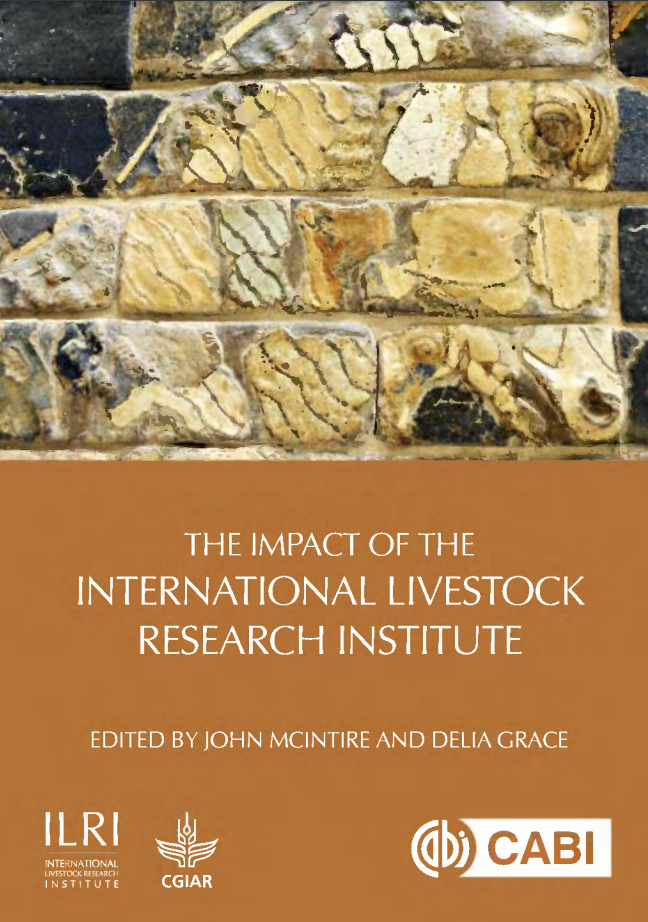
McIntire, J. and Grace, D. (eds). 2020.
The Impact of the International Livestock Research Institute.
Nairobi, Kenya: ILRI and Wallingford, UK: CABI.
<><><>
And check out this report by Brenda Coromina about ILRI's earlier high-level roundtable review of the book on 6 Oct 2021:
High-level roundtable reviews 45 years of livestock research and its future multi-functional and problem-solving role in sustainable development
Selected references for ILRI animal health research reported above
McIntire, J. and Grace, D. (eds.)The Impact of the International Livestock Research Institute. Nairobi, Kenya: ILRI and Wallingford, UK: CABI, 2020, chapters 1 through 6.
Dolapo Enahoro, Mario Herrero and Nancy Johnson, Promising options for improving livestock production and productivity in developing countries, ILRI Project Report, October 2019.
ILRI News blog: Vaccinating farm animals helps drive up disposable incomes, 4 July 2018
Vish Nene, ILRI News blog: ‘Living tools’ at the frontier of vaccine development—A Keystone Symposium workshop by Vish Nene, 20 April 2018
ILRI News blog: ILRI’s Kapiti livestock research station—and Kenyan and global public goods—imperiled by land grabs in Kenya, 5 January 2018
ILRI Clippings blog: Kenyan herding families that vaccinate their cattle against disease send more daughters to school—New study, 19 December 2016
Susan MacMillan: Vaccine research on Africa’s cattle-killing East Coast fever: A short (somewhat potted but handsomely illustrated) history, Atlas of Science, 26 July 2016
ILRI Research Brief 71, The use of the Infection and Treatment Method vaccine in controlling East Coast Fever in Kenya: Does gender matter for adoption and impact?, by Humphrey Jumba, Nils Teufel, Henry Kiara and Isabelle Baltenweck, December 2016.
ILRI News blog: New vaccine launched today to protect Kenyan cattle against East Coast fever, 7 Dec 2012
Katherine Homewood, Patti Kristjanson and Pippa Chenevix Trench: Staying Maasai?: Livelihoods, conservation and Development in East African Rangelands, 2009, New York: Springer Press. https://doi.org/10.1007/978-0-387-87492-0_10
Katherine Homewood, Pippa Trench, Sara Randall, Godelieve Lynen and Beth Bishop. 2006. Livestock health and socio-economic impacts of a veterinary intervention in Maasailand: Infection-and-treatment vaccine against East Coast fever. Agricultural Systems 89 (2–3): 248–271. https://doi.org/10.1016/j.agsy.2005.09.004






